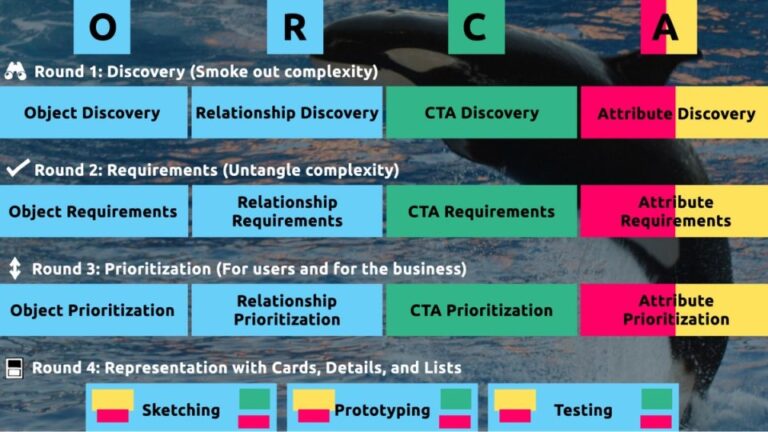Comprehensive Guide to WordPress Website Development
Developing a WordPress website is a sequential process that requires careful planning, thoughtful execution, and consistent maintenance to ensure it meets the needs of users and achieves its intended goals. This involves a series of clearly defined stages, including planning, designing, content creation, optimisation, and ongoing maintenance. Each stage plays a crucial role in building a website that is not only visually appealing and functional but also secure, high-performing, and engaging for its target audience. By incorporating the right plugins and tools during these stages, you can effectively enhance your website’s capabilities and ensure that it delivers a seamless experience to its visitors.
Focus on these critical stages and leverage the recommended plugins to build a WordPress website that stands out in the competitive digital space and consistently delivers exceptional results.
What makes Fastdot.com such a great WordPress hosting provider:
Fastdot.com specialises in WordPress hosting and is highly regarded for its streamlined installation processes, robust and secure infrastructure, and round-the-clock expert support. This makes it an excellent choice for both beginners and experienced developers looking to ensure a reliable hosting environment for their WordPress websites.
WordPress – Digital Experiences, Re-imagined:
In today’s rapidly evolving digital landscape, WordPress has emerged as a powerful and versatile platform, serving as a cornerstone for creating innovative and adaptive digital experiences. Initially launched in 2003 as a straightforward blogging tool, WordPress has evolved into a comprehensive content management system (CMS) that powers over 40% of all websites worldwide, demonstrating its adaptability and scalability for various online applications.
How to Optimize Your Images to Speed Up WordPress:
Image optimisation involves reducing the file size of images without compromising their visual quality. This process is essential for enhancing your website’s loading speed, which directly improves user experience and boosts your search engine rankings. Implementing effective image optimisation techniques can significantly enhance the overall performance of your WordPress site.
The Importance of WordPress Design:
WordPress, which powers over 40% of websites globally, plays a pivotal role in shaping modern digital experiences. Whether you are building a personal blog, a corporate website, or a complex e-commerce platform, the design choices you make will directly influence user engagement, brand perception, and conversion rates, making thoughtful design an integral part of the development process.
MediaWiki on Fastdot: The Leading Australian Hosting Provider:
MediaWiki is an open-source platform renowned for powering Wikipedia. It enables users to create, edit, and manage large-scale collaborative projects and knowledge bases. When hosted on Fastdot, users benefit from a reliable infrastructure, ensuring that their MediaWiki projects run smoothly and securely.
WordPress Hosting on Fastdot – Australia’s Leading Hosting Provider:
Fastdot stands out as one of Australia’s premier web hosting providers, offering robust, high-performance solutions specifically tailored for WordPress sites. Their advanced infrastructure, unparalleled security features, and expert support team ensure that your WordPress website operates efficiently and securely, no matter its size or complexity.
Prestashop eCommerce Hosting – Australia’s Leading Hosting Provider:
PrestaShop is an open-source eCommerce platform trusted by over 300,000 online stores worldwide. It offers advanced functionalities such as product management, integrated payment gateways, SEO tools, and a rich ecosystem of themes and modules. When hosted on Fastdot, PrestaShop empowers businesses to create highly customisable and scalable online stores.
How to Register a Domain Name:
Registering a domain name is one of the most critical steps in establishing an online presence, whether it’s for a personal project, a small business, or a larger organisation. This comprehensive guide walks you through the process of securing a domain name, ensuring that your website has a unique and memorable address on the internet.
Flickr Group Feature – Challenge Accepted!:
This article highlights the unique dynamics of popular Flickr groups like Macro Mondays, where a shared focus and strong moderation foster vibrant online communities. Such groups demonstrate how collaboration and shared goals can create engaging and successful digital spaces.
Introduction
WordPress powers over 43% of all websites on the internet, making it the go-to platform for businesses, bloggers, eCommerce entrepreneurs, and digital agencies. Its flexibility, vast plugin ecosystem, and ease of use make it ideal for building anything from a personal blog to a complex enterprise portal.
This guide provides a step-by-step walkthrough for developing a complete WordPress website — from planning and hosting to launch and optimisation.
1. Planning Your WordPress Website
Before writing code or installing themes, plan your site structure and goals.
Key Considerations:
-
Purpose: Blog, Business, Portfolio, eCommerce, Membership?
-
Target Audience: Who are your users and what do they need?
-
Site Architecture: Plan the main pages (Home, About, Services, Blog, Contact).
-
Functionality Requirements: Do you need booking, multilingual support, online payments?
Tools for Planning:
-
Mind-mapping tools (like XMind or Whimsical)
-
Wireframing tools (Figma, Balsamiq)
2. Choosing a Domain and Web Hosting
Domain Name:
-
Choose a brandable, easy-to-type domain.
-
Register through providers like Namecheap, GoDaddy, or Google Domains.
WordPress Hosting Types:
-
Shared Hosting: Cheap and beginner-friendly (e.g., Bluehost, SiteGround)
-
VPS Hosting: More control and power (e.g., DigitalOcean, Linode)
-
Managed WordPress Hosting: Fully optimised (e.g., Kinsta, WP Engine, Fastdot)
-
Dedicated Server or Cloud Hosting: For high-traffic sites (e.g., AWS, GCP)
🛡️ Make sure your host supports PHP 8+, MySQL/MariaDB, and has SSL support.
3. Installing WordPress
Using Auto Installer (e.g., Softaculous, cPanel):
-
Log into your hosting panel.
-
Choose WordPress from the app installer.
-
Fill in site name, admin user, password, and install.
Manual Installation:
-
Download WordPress from wordpress.org.
-
Upload via FTP/SFTP.
-
Create a database via phpMyAdmin.
-
Configure
wp-config.php. -
Run the installation script from your browser.
4. Choosing and Installing a Theme
A theme defines the look and feel of your site.
Free Themes:
-
Available in the WordPress Repository (Appearance > Themes)
-
Examples: Astra, OceanWP, Neve
Premium Themes:
-
Found on marketplaces like ThemeForest, TemplateMonster, or Kadence
-
Often bundled with page builders and premium plugins
🎨 Choose responsive, SEO-friendly, lightweight themes.
5. Installing Essential Plugins
Plugins add functionality to your site. Here are must-haves:
SEO:
-
Rank Math or Yoast SEO
Performance:
-
WP Rocket (premium) or W3 Total Cache
-
Smush or ShortPixel for image optimisation
Security:
-
Wordfence or iThemes Security
-
reCAPTCHA plugin for spam prevention
Backups:
-
UpdraftPlus or BlogVault
Design & UX:
-
Elementor, Beaver Builder, or Gutenberg Blocks
-
WPForms or Gravity Forms
-
Menu and Header customisers
Analytics & Marketing:
-
Google Site Kit
-
Mailchimp for WordPress
-
MonsterInsights
6. Customising Your WordPress Site
General Settings:
-
Site Title and Tagline
-
Permalinks (Set to Post Name)
-
Time Zone, Language, and Date Format
Menus & Navigation:
-
Create menus in Appearance > Menus
-
Assign to header, footer, or mobile menu
Widgets:
-
Add to sidebars, footers, or widget areas
-
Use for search bars, recent posts, or custom HTML
Homepage Setup:
-
Use a static page or latest posts
-
Configure under Settings > Reading
7. Creating Pages and Posts
Core Pages:
-
Home
-
About
-
Services/Products
-
Blog
-
Contact (with a form and map)
-
Privacy Policy and Terms
Post Categories and Tags:
-
Organise content logically
-
Use tags for micro-topics
8. Designing with Page Builders
Page builders like Elementor or Gutenberg make design intuitive.
Key Features:
-
Drag-and-drop elements
-
Pre-built templates
-
Mobile responsiveness controls
-
Integration with WooCommerce, forms, and media
9. Implementing SEO Best Practices
Search engine optimisation is critical for visibility.
On-Page SEO:
-
Use keywords in headings, meta titles, and image alt text
-
Use schema markup and breadcrumbs
-
Optimise URLs (short, descriptive)
Performance & Mobile:
-
Compress images and enable lazy loading
-
Test with Google PageSpeed Insights and GTmetrix
Content Strategy:
-
Maintain a blog with high-quality, keyword-rich content
-
Use internal linking
-
Add pillar content and topic clusters
10. Securing Your WordPress Website
Key Steps:
-
Use strong admin passwords
-
Limit login attempts
-
Install SSL certificate
-
Disable XML-RPC (unless used for remote publishing)
-
Regularly update core, themes, and plugins
11. Launching and Going Live
Before launching:
-
Test on multiple browsers and devices
-
Validate contact forms and eCommerce checkouts
-
Check for 404s and fix broken links
-
Setup Google Search Console and submit sitemap
Launch Checklist:
-
Remove default content (Hello World, Sample Page)
-
Replace all placeholder images
-
Ensure proper branding, logos, and favicons
-
Backup your site
12. Ongoing Maintenance
Routine Tasks:
-
Weekly plugin and theme updates
-
Monthly full-site backups
-
Quarterly SEO audits
-
Speed optimisation checks
-
Uptime monitoring (via UptimeRobot)
Maintenance Tools:
-
ManageWP or MainWP for multisite management
-
WP Maintenance Mode plugin during downtime
13. Advanced Development (Optional)
Custom Post Types (CPTs):
-
Use plugins like CPT UI or code manually
Custom Fields:
-
Advanced Custom Fields (ACF)
WooCommerce:
-
For online stores, install and configure WooCommerce
-
Add products, payment gateways, shipping rules
Multilingual Support:
-
WPML or Polylang
API Integrations:
-
REST API for headless WordPress or mobile app support
-
Integrate with CRMs, Mailchimp, Stripe, etc.
Conclusion
WordPress is a robust, scalable, and user-friendly platform that adapts to your needs as you grow. By following this comprehensive guide, you will be well-equipped to develop a modern, optimised, and secure WordPress website that delivers results.
Whether you’re building a simple portfolio or a full-scale eCommerce store, the flexibility of WordPress combined with the right strategy ensures long-term success.


